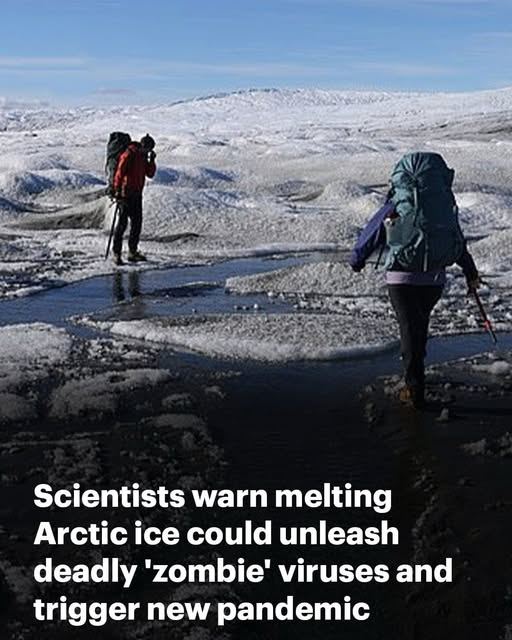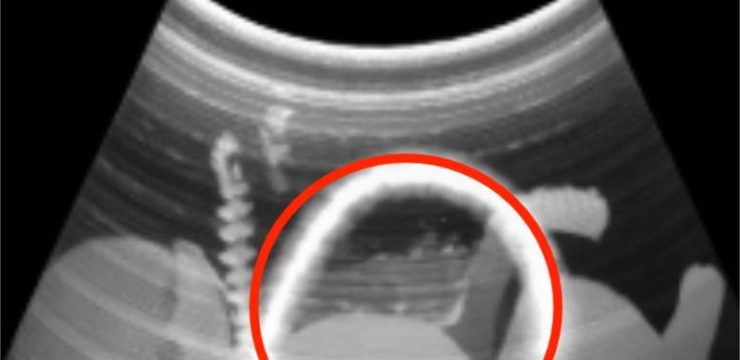Since the COVID-19 pandemic, the scientific community has been laser-focused on identifying what could trigger the next major global health crisis. While many eyes are on the usual suspects like densely populated cities and wildlife markets, some researchers are turning their attention far north—to the Arctic.

Why the Arctic, you ask? Because it’s melting. And beneath that frozen landscape lies a hidden, ancient threat: viruses that have been sealed in ice for tens of thousands of years. As the climate warms, permafrost and glaciers are thawing at alarming rates, potentially releasing these long-dormant microorganisms—what scientists are now calling “zombie viruses.”
These aren’t just science fiction. In recent years, researchers have successfully revived several of these ancient viruses in controlled laboratory settings. For example, Pithovirus sibericum, frozen in Siberian permafrost for about 30,000 years, was brought back to life and found to still be infectious (though only to single-cell organisms). Another virus, Pacmanvirus lupus, was discovered in the remains of a 27,000-year-old Siberian wolf and also reactivated under lab conditions.
While these particular viruses may not pose a direct threat to humans, they raise serious questions about what else might be lurking beneath the ice. In 2016, one of those questions became all too real. A heatwave in Siberia thawed the carcass of a long-dead reindeer infected with anthrax. The spores, which had been trapped in the frozen soil, were suddenly active again. The result? Dozens of people and over 2,000 reindeer became sick, and a 12-year-old boy tragically died. That outbreak served as a chilling preview of what could happen on a larger scale.
Fast forward to 2023, and scientists made another unsettling discovery. While studying a glacier in China, researchers unearthed a staggering 1,700 previously unknown viruses—many of which had never been documented before. While it’s not yet clear how dangerous these microbes might be, the mere fact that they exist—and could one day be unleashed—is enough to raise global concern.
So, why is this such a big deal?
First and foremost, our immune systems are not prepared for these ancient pathogens. These viruses evolved in a time when humans were either nonexistent or living in entirely different environmental conditions. We have no natural defenses against them, and modern medicine may not be ready either. If one of these pathogens were to infect a human today, the body might not recognize it at all, allowing it to spread unchecked.
Second, many of these potential threats are zoonotic—meaning they can jump from animals to humans. This is exactly how viruses like COVID-19, SARS, and Ebola made their way into the human population. The Arctic is home to a range of wildlife that could serve as intermediary hosts, further increasing the chances of transmission.
Third, and perhaps most critically, the Arctic is one of the least-equipped regions in the world to handle a sudden viral outbreak. Its remote locations lack robust healthcare infrastructure, and its harsh climate makes transportation and communication challenging. If an outbreak were to occur there, it might take precious days or even weeks before help could arrive—and by then, the virus could spread far beyond the icy tundra.
Experts are sounding the alarm: what happens in the Arctic doesn’t stay in the Arctic. As global travel and trade resume full swing post-pandemic, the potential for these ancient microbes to hitch a ride across borders is very real.
Of course, this doesn’t mean we’re doomed. Scientists are actively monitoring permafrost regions and developing protocols to study these ancient microbes safely. Advances in genome sequencing and synthetic biology are helping researchers better understand how these viruses function and how to potentially neutralize them.
Still, the idea that climate change could unearth threats not seen for tens of thousands of years adds a new layer to the global warming conversation. It’s no longer just about rising sea levels or extreme weather events—it’s also about invisible dangers thawing beneath our feet.
In short, as the Arctic melts, it might be revealing more than just soil and ancient bones. It could be unsealing a Pandora’s box of pathogens that modern humanity has never encountered before. And unless we take climate change, global surveillance, and virus research seriously, we may find ourselves facing a pandemic that began not in a crowded market—but in a melting ice sheet at the top of the world.





